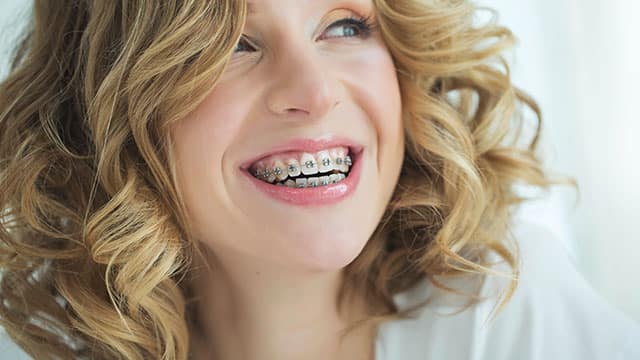-
-

FLUORIDE
What Is Stannous Fluoride Toothpaste?Discover what is Stannous Fluoride Toothpaste and its importance to prevent cavities and other oral health problems.

TEETH WHITENING
Whitening toothpaste - hydrogen peroxide vs. carbamide peroxideIf you lose one or more of your front teeth due to injury or decay, you may feel ...
-
Science & InnovationOral Health Commitment
- Oral Health Commitment
- Bright Smiles, Bright Futures
- Educational Resources
- Mobile Dental Van
- Volunteer
- ORAL HEALTH CHECK
- PRODUCT MATCH
- Oral Health and Dental Care | Colgate®
- Oral Health
- How Headgear Braces Perfect A Misaligned Smile


During a person's orthodontic treatment, the upper jaw (maxilla) and the lower jaw (mandible) can be more uneven in their positions than in traditional cases of misalignment. In these situations, based on a clinical diagnosis and digital imaging, the orthodontist may recommend wearing headgear braces for a certain portion of your child's overall orthodontic treatment. But what are they, and how are they different from your traditional wires and brackets?
What Is Headgear?
Headgear is the general name for a type of external appliance that applies specific forces to guide the growth of your face and jaw, according to the American Association of Orthodontics (AAO). Orthodontists use them in special cases where your teeth need to move into a position that isn't possible with brackets, wires or clear retainers found in routine care. Because these braces consist of wires that engage both the inside and outside of the mouth, you or your child may feel that it looks a little strange. But it is used by orthodontists very often and for a common purpose – and it's a necessary part of the beautiful end result.
What Is It Used For?
Retraction headgear (also known as Class II correction) is designed to retract the upper jaw, and protraction headgear (also known as Class III correction) is used to move the upper jaw forward while guiding and stabilizing the lower jaw. The process chosen depends on the patient's individual needs. Headgear appliance therapy is usually used when a child or young adult is still growing in order to take advantage of the bones in the jaw when they're still erupting into place. This way, the appliance can guide the teeth and jaw bones into their new positions before they've settled.
How Is It Fitted?
There are two common types used: The "facebow" type consists of a single strap that fits around the back of your neck and has a wire that attaches to the front braces of your teeth. The "J hook" type uses wires that attach to your braces and straps that fit over your head and neck. The ultimate length of time will depend on how crowded or misaligned the upper and lower jaws are, and how well the young patient follows his or her personal instructions.
Are There Special Instructions for Headgear Wearers?
Because the additional appliance hooks onto the existing braces, headgear braces have to be removed when eating, sleeping, playing sports or any time the patient might accidently have it pulled or bumped during physical activity. Routine visits to your general dentist and dental hygienist are even more important, but proper brushing and using specially designed products will help ensure that your teeth are protected from the bacteria that can go hidden around your braces for the entire time you're undergoing treatment.
Regardless of the little extra effort required when wearing orthodontic headgear, the healthy and beautiful smile achieved when the treatment is complete will have made the hard work involved well worth it.
Related Articles

Adult orthodontics
How Much Are Braces With Insurance?When you learn that your child needs orthodontic treatment, cost is one of the first thoughts to cross your mind. So, how much are braces with insurance?

Adult orthodontics
How Headgear Braces Perfect A Misaligned SmileFind information on orthodontics for adults, including alignment, preventative treatments and maintenance of braces, from the Colgate Oral Care Center.

Adult orthodontics
4 Reasons You May Have Your Permanent Retainer RemovedIf you have a permanent retainer on the back of your teeth, you may consider one of these reasons for a permanent retainer removal in the future:

Adult orthodontics
Teeth Reshaping After Braces And Other Ways to Perfect Your SmileYou can use retainers, teeth whitening procedures, contouring and teeth reshaping after braces come off to perfect your smile.
Related Products

Esse enxaguante bucal multibenefício Colgate Total 12 Carvão Ativado apoia as defesas naturais da sua boca com o zinco. Ele também ajuda a manter os dentes mais brancos, além de combater germes e bactérias para uma limpeza total por até 12 horas.

Colgate Total Alcohol Free* Gum Health Mouthwash delivers 24-hour protection** against bacteria and also helps prevent gum problems

Colgate Total Fresh Mint Toothpaste fights bacteria, the root cause of many oral health issues such as gingivitis, tartar, sensitivity, weak enamel, bad breath, and cavities.

Formulated with Fluoride and with a great mint taste, Colgate Cavity Protection Toothpaste cleans thoroughly, strengthens teeth, and fights cavities.

Helping dental professionals
More professionals across the world trust Colgate. Find resources, products, and information to give your patients a healthier future




